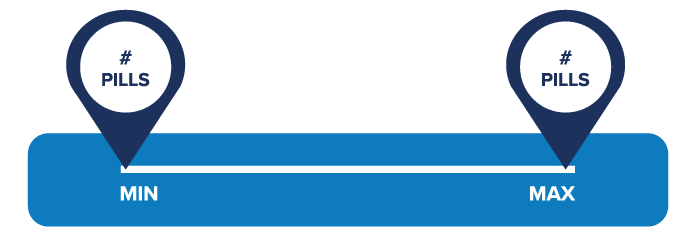Obstetrics and Gynecology Surgery
Download PDF
OPEN’s Opioid Prescribing Recommendations are designed to spark meaningful conversations between patients and providers, so every pain management plan is tailored to the individual. These recommendations are rooted in research, patient-reported outcomes, and expert consensus. They are intended for patients who haven’t used opioids before surgery. Explore OPEN’s evidence-based recommendations for safer prescribing after adult obstetrics and gynecology surgery below.
Learn more at michigan-open.org/prescribing-recommendations/.
Hysterectomy – Vaginal or Laparoscopic/Robotic or Abdominal
0-10
DATA ANALYSIS
Laparoscopic Hysterectomy
- Patient Reported Outcomes data collected via Michigan Surgical Quality Collaborative
- January 1, 2018 – October 31, 2021
- 3651 Opioid Naive Patients from 56 Michigan Hospitals
Vaginal Hysterectomy
- Patient Reported Outcomes data collected via Michigan Surgical Quality Collaborative
- January 1, 2018 – October 31, 2021
- 1624 Opioid Naive Patients from 60 Michigan Hospitals
Abdominal Hysterectomy
- Patient Reported Outcomes data collected via Michigan Surgical Quality Collaborative
- January 1, 2018 – October 31, 2021
- 1202 Opioid Naive Patients from 59 Michigan Hospitals
SUPPORTING LITERATURE
DeBlanc et al. 2022 (Level 3 evidence)
- DOI: https://doi.org/10.1016/j.ajog.2021.12.114
- Analyzed data from 2,359 individuals who underwent a hysterectomy at a single institution between 1 January 2018-31 October 2019.
- Recommended prescription for abdominal hysterectomy = 7 tablets.
- Recommended prescription for laparoscopic or vaginal hysterectomy = 5 tablets.
SUPPORTING LITERATURE
Peahl et al. 2023
Osmundson et al. 2018
- DOI: https://doi.org/10.1097/aog.0000000000002782
- Individualized prescribing resulted in median of 14 tablets prescribed without differences in PROS
- Patients in the individualized group reported using only half the number of prescribed opioids
Holland et al. 2019
- DOI: https://doi.org/10.1097/aog.0000000000003010
- Implementation of an opioid-free postpartum pathway decreased discharge prescribing
- Of those requiring a prescription, median was equivalent to15 tablets oxycodone.
- No change in pain scores or overall satisfaction with pain relief
OPIOID PRESCRIBING
When an opioid is needed after surgery, use the OPEN prescribing recommendations as the foundation for a shared decision-making conversation with the patient to determine the best prescription size.
It’s important to note that these are not rigid rules that must be adhered to, but rather recommendations. Starting form a standardized approach and then allowing for individualization helps promote both equity and patient-centeredness.
- Determine the opioid prescribing range based on:
- Type of procedure
- Additional procedures performed
- With the patient, determine the best prescription size within the appropriate range
- Assess for individual risk factors
- Consider patient preferences and other non-opioid strategies utilized
- Pain management at the time of discharge:
- Pain scores in 24 hours prior to discharge
- Medication use in 24 hours prior to discharge
- Timing of discharge

